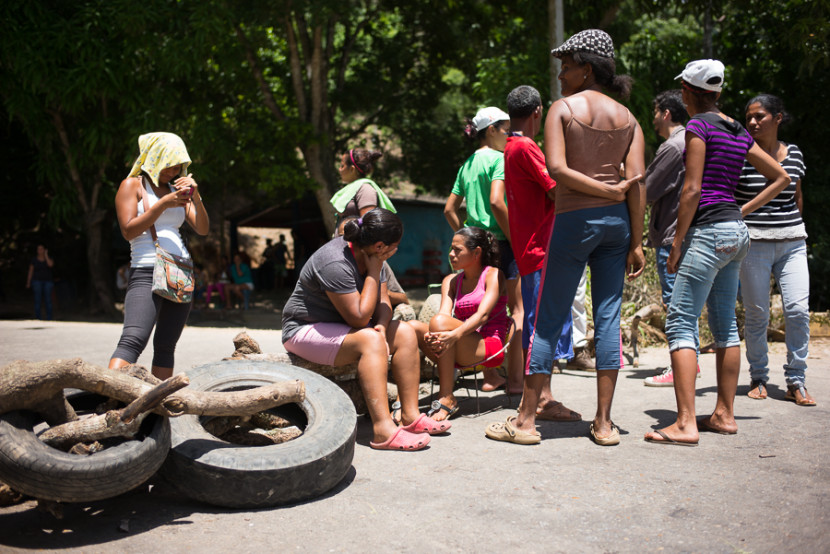It is after 2 p.m., and all Abel has had to eat is a single mango. He still does not know if he will have to go to bed on empty stomach. He is sitting on a blue plastic bench, behind a table on which he sells fruit juices half a block from Carúpano’s Hospital .
Abel should be in school, but the economic crisis that has stroke the region pushed him to drop out to help his parents get food. The profit he gets from selling natural juices barely allows him to eat once or twice a day. “When I find mango, I try to keep one for the night, to silence the stomach’s noise and be able to sleep calmed.”
In the middle of a severe food shortage crisis, the inhabitants of the Paria Peninsula put a new name to the mango: the noise reliever. The term has become popular and it is now used to identify the fruit that has the ability to temporarily neutralize the noise the stomach makes when a person is hungry.
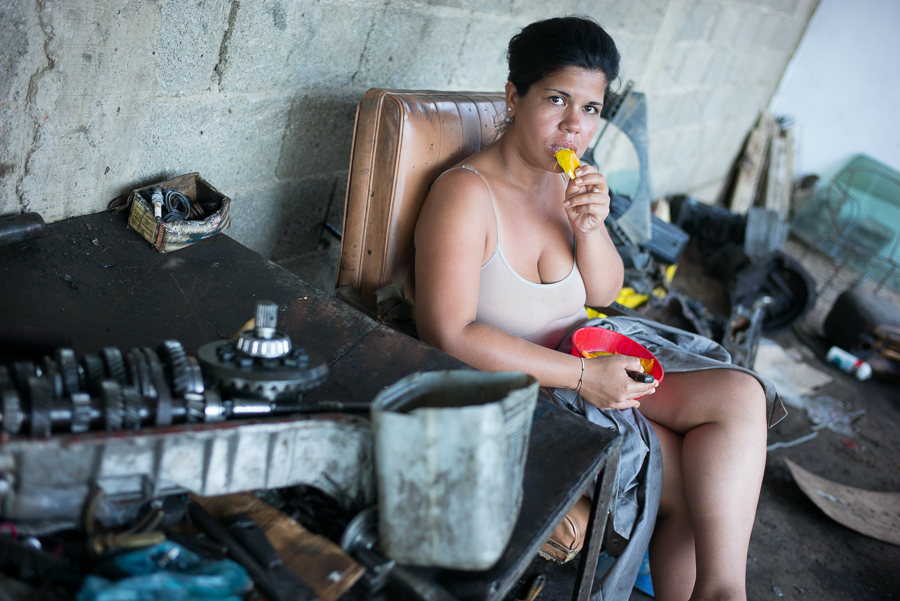
The popular term is not fortuitous. In the state of Sucre, the food is scarce and the inhabitants of the zone build their diet based on vegetables like yam and yucca, or as a phrase commonly heard in the Peninsula of Paria describes it “with whatever can be found”. They are not accustomed to coexist with hunger.
It is difficult to explain how the country with the biggest proven oil reserves in the world cannot guarantee its population’s food safety.
Its low production rates make Venezuela dependent on food imports, which have been affected by the quick decline of the country’s income. 96% of the foreign currency entering the country relies on oil exports: its market price has decline dramatically, leaving Venezuela’s Central Bank without liquidity to import the amounts of food it needs.
Information from the polling firm Datanalisis indicates that food shortage in the country is 82.8%, and an unofficial estimate of August says that a family of 5 members needs 10.07 minimum wages to cover the cost of the basic food basket.
Food shortage is the main cause of public demonstrations that occur on a daily basis in the Peninsula of Paria. Cumaná, the capital city of the state of Sucre, was militarized after a wave of lootings on June 14th, where 70 businesses were affected. Many remain close for total loss. The riots originated 4 days after a food protest in El Cerezal, Cariaco, was heavily repressed by security forces and left a balance of 1 dead and 12 injured.
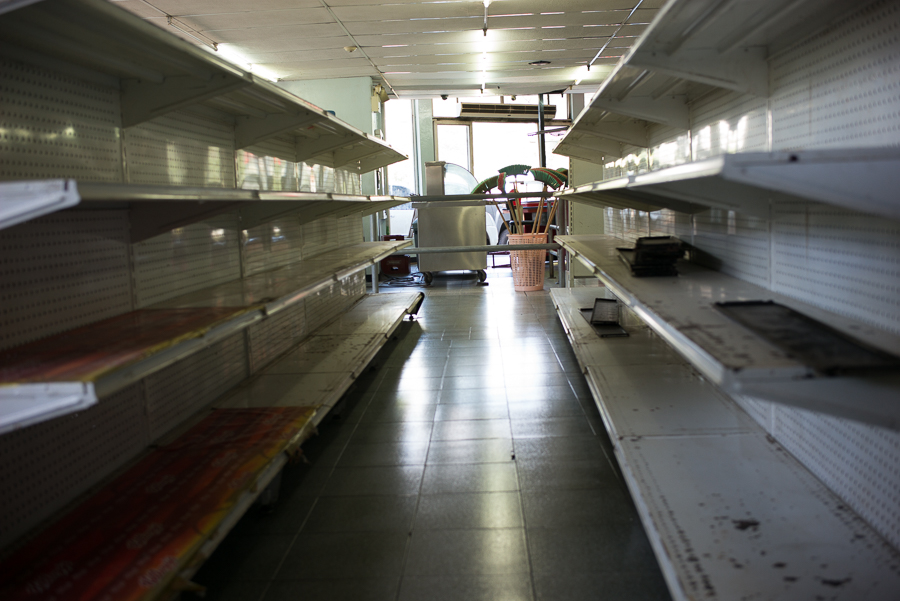
Since then, there have been up to 4 food protests a day, in which people block the roads and demand food from the authorities. Food protests are not exclusive of the state of Sucre. The Venezuelan Observatory of Social Conflict (OVCS) has registered an accelerated increase of food protests across the whole country. The organization has documented 1064 protests in 2015 and only in the first half of 2016 it has counted 954.
In Sucre, the Local Supply and Production Committees (publicly known as CLAP for its Spanish acronym), designated by the national government to guarantee the supply of basic products, has not succeeded in distributing food on a regular basis.
José Luis Malavé Casorna, a retired employee from the state-owned phone provider company, CANTV, sees with concern how the food takes several weeks to arrive. “Two months ago we received the previous food bag, and just today we got the new one. There is 4 people in my family and that is not enough. You know how hard it is to hold for 2 months? The necessity we are going through is critical,” he says.
In Río Caribe, CLAP food bags have been sold for 2500 Bolivares, while in El Pilar they were sold for 4500 and in Cumaná for 4600 Bolivares. Prices may vary depending on the products they contain. System’s beneficiaries do not have the option to choose what they want to buy. The contents of the bag have been previously prepared by the CLAP. They take or they leave it.
Jefferson Figuera lives in Quebrada de Piedra. He is father of three children and he regularly participates in protests. With indignation he describes the contents of the last bag he received from the CLAP. “They sent us 2 soaps, a deodorant and two packets of corn flour. What did they want me to do? Eat an arepa with soap?”
In the absence of protein sources, the most inexpensive fish on the market, the sardine, has taken a leading role in the fight against hunger. According to deceased president Chávez, in 2012 Sucre state was responsible for the production of 60% of Venezuela’s fish market. 2 pounds of sardine can be purchased today in the Municipal Market of Carúpano for 200 bolívares, and it has been given the popular name of blue jean, because “it fits with everything.”
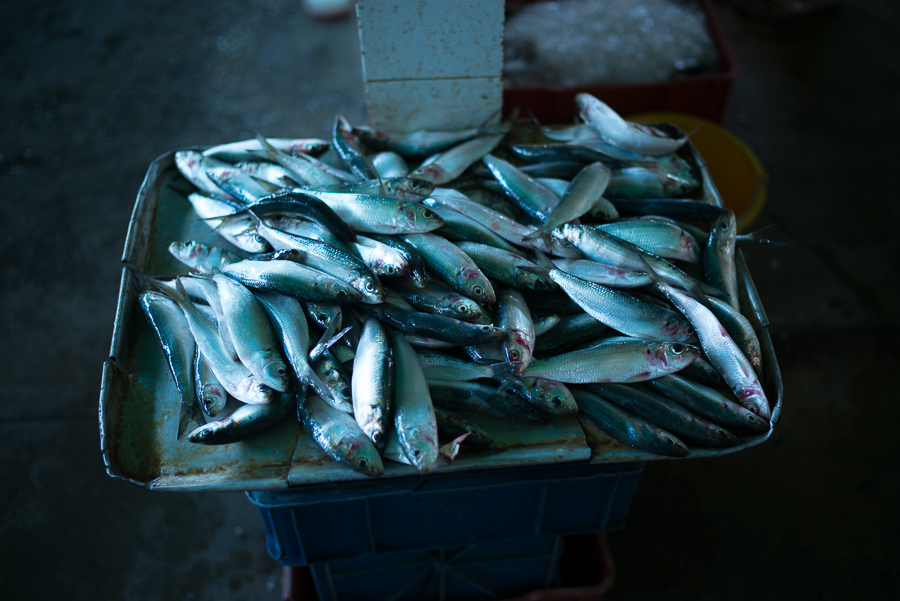
Elsa Tovar seems unable to remember what her favorite food is. “I liked to eat everything: meat, fish, chicken. However, nowadays I can’t even find eggs. And the tiny wage of 22.000 Bolívares I get is not enough.” She has a bony face. When she speaks, she shows the three teeth she has left and a resignation tone. Celsa is not able to identify her favorite dish, but she can call out the one she dislikes the most. “Oh boy, I don’t like sardine, but I have to eat it because I can’t find anything else.”
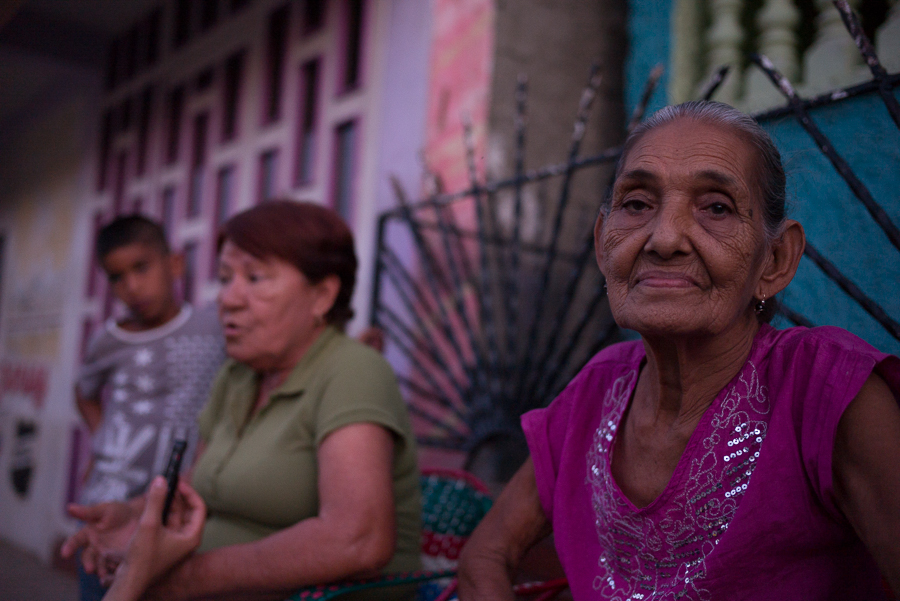
The Municipal Market of Carúpano is the region’s main market, and both the city and other towns in the rest of the peninsula benefit from it. It used to open from 5:30 a.m. to 5:30 p.m., and it received around 4 or 5 thousand people a day. However, the economic crisis and the increasing insecurity have affected its activity and the market now closes at 12 p.m.
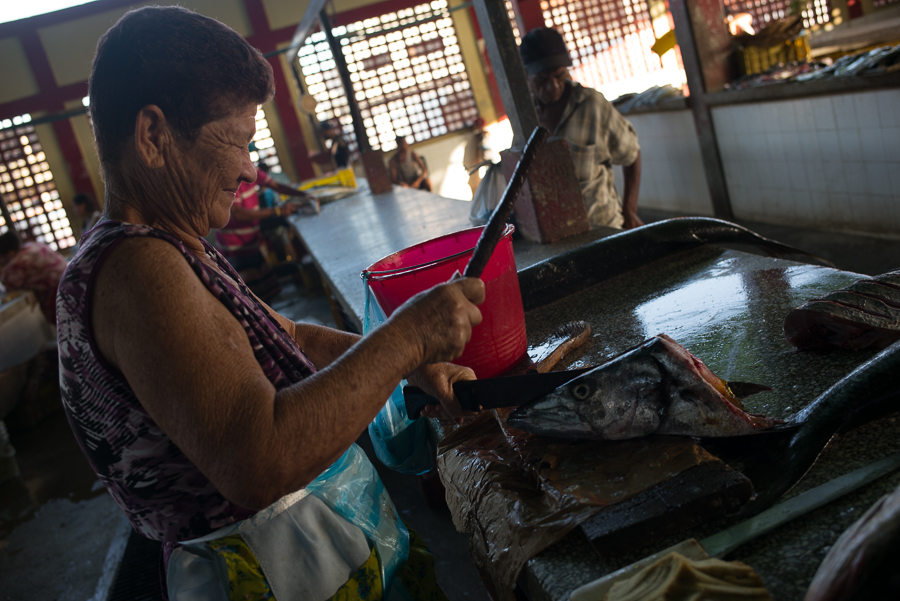
To avoid being a victim of robberies during the night, Marina Ávila takes home what she does not sell during the day. “They steal the stores at dawn, they steal from the people that freezes the fish. If there is fish left overnight, they come for it.” Marina fears a total loss due to the prevailing insecurity. She herself states that it is not only in her home that they are starving but “all across the country.” It is the explanation she gives as to why thieves are not stealing money but food.
“I usually eat two arepas. But today …today, I’m not even close to that. Today I have not eaten a thing.” are the words that are heard in one of the market’s stores. In the rows of tables of about 82 feet (some tiled, others in crude cement) in which fresh fish, squid, meat, vegetables and legumes were once offered, there is no merchandise to be sold. There are even people sleeping over them.
For 40 years Félix Villarroel has been a seller at the market. He is leaning on his shelf, and although he does not say his age, he has wrinkles on his face and on the sides of his cap, locks of gray hairs that already occupy his head stick out. It’s 6:30 in the morning, and he’s the only salesman at the table. He displays a single product: bananas. The old man says: “there is no light in this market, there is no security. One asks for security and they reply there is no budget. In here people steal every day.”
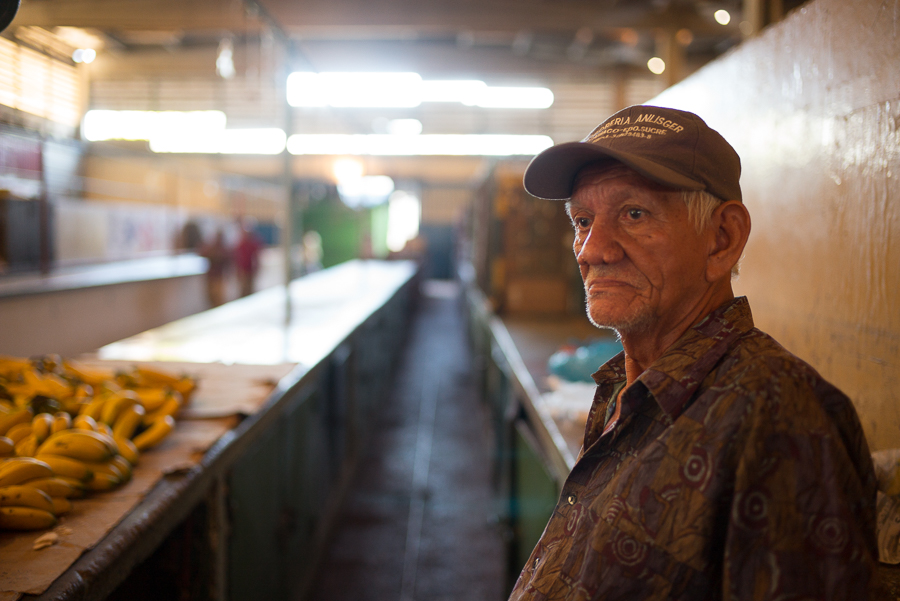
Luisa Salazar sells fish in the only fairly supplied market place, a center that used to be the main supplier for Carúpano and other nearby villages. It has 5 small groups of fish: corocoro, bonita blanca, pargo, lamparosa and tajalí. “Sales have decreased with the crisis that the country is suffering. What people are buying is the famous blue jean –she says, referring to the sardine– because it is the cheapest one.”
Once upon a time, fish stew was one of the most popular dishes in the East of Venezuela. There was even an old popular saying that was heard all along the peninsula of Paria. It said: “you can’t deny anyone a fish stew.” The saying, which became popular because of how easy it was to gather the ingredients for the fish stew recipe, which was cooked to offer any visitor a welcome meal, has lost validity because of the crisis.
According to what it can be calculated from visiting different Carúpano’s markets and its surroundings, the cost of elaborating a fish stew for 5 people exceeds 6 thousand bolívares. A minimum wage (Bs. 22,576.50) or an old age pension cannot afford more than 4 fish stews per month.
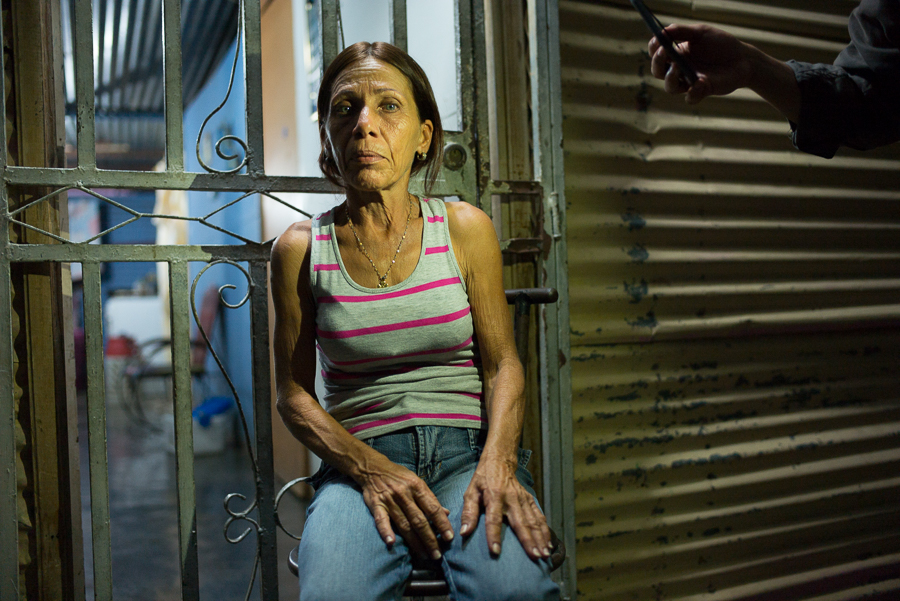
A paralyzed state
The car suddenly stops in front of dozens of other cars on the side of the road. Drivers turn off their vehicles. Some remain seated inside, others get out of them to stretch their legs. The traffic jam will not be short. Hundreds of miles ahead is the explanation of the event: a roadblock for food.
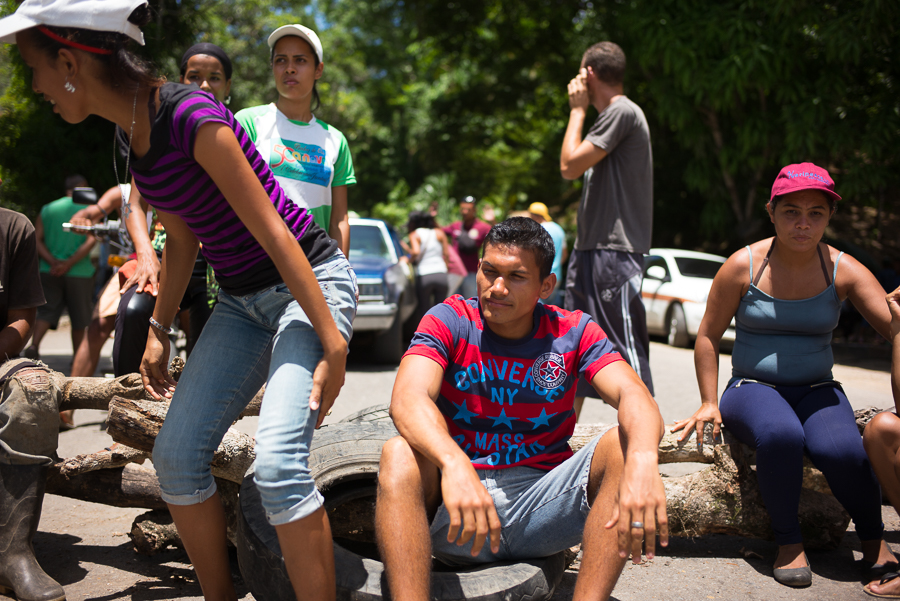
This is a form of protest that has been institutionalized in the state of Sucre. Most of the road blocks are orchestrated by a town’s community, demanding the presence of a government’s authority to bring food bags and distribute them among the population, or at least, to have them committed to bring food the next day. If the officials do not comply, as well as the show, the road blockage must go on.
The road block in Quebrada de Piedra, via El Pilar, is made of sticks and old car wheels. Demonstrators sit in the middle of the road, blocking it.
Therefore, life becomes paralyzed. A bus stops when it meets the barricade. Groups of students from the Polytechnic University of Paria descend from the bus, to continue their journey on foot. The other alternative is to go across the barricade and take another transport, which can take them to Carúpano in order to attend class. Mothers with babies in their arms, leave their cars and cross the barrier prevent their children from staying in the sun for hours. The temperature is 32 degrees.
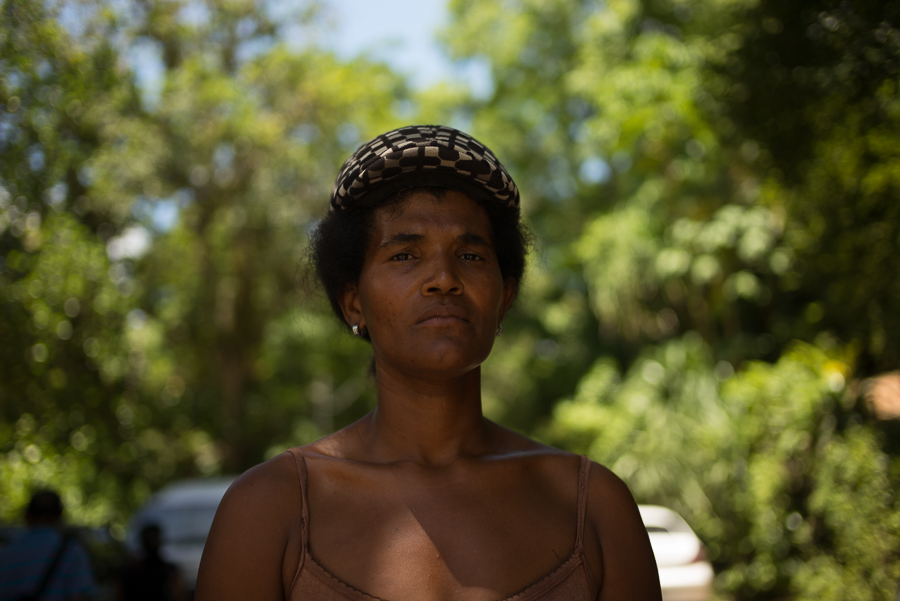
A jeep of the National Guard, loaded with 6 officials, advances towards the road block. The driver lowers the jeep’s window and orders people to let them pass. One of the demonstrators denies the request by waving no with his finger. The jeep shortens its distance: it accelerates and brakes repeatedly, approaching the barricade in a challenging way.
It looks like the scene of a thriller movie. The shouts of the group of protesters emerges from the barrier. They say: “a road block is road block. No cars shall pass!” But the jeep is still approaching. When the National Guard’s jeep is at a short distance, one of the demonstrators hits the car hood with his hand, demanding it to stop. The jeep stays static. The guards do not get out of the vehicule. They remain silent in front of the blockage. They too are spectators. Contemplating what happens. In a little while they will begin to yawn. Nobody moves on that road. Neither civilian nor officials. We are all blocked.
A taxi approaches the epicenter of the road block. In it, there is a pregnant woman heading to Carúpano’s Hospital. A debate erupts amongst the demonstrators, and after a few minutes, they decide to let her go through. The jeep of the National Guard is still parked at the same point, in front of the barricade. It does not move, it does not let the taxi advance. The taxi makes a complex maneuver to evade the National Guard’s jeep and manages to pass through the gap that has been opened by the people. With a little luck, the baby will be born in a hospital bed.
What Luis Marín, a skinny and joyful truck driver, worries the most, is that a road block could leave him trapped in the middle of the countryside, where there is nowhere to buy food. The trucker says road blocks, motivated by food shortage, have proliferated and this type of protest can occur up to 4 or 5 times in a single day. “The blocks can last up to 8 hours and more. It depends on whether the Mayor responds to the communities organizing the protest. Normally the authorities do not bring them food right away. Everything is promised for the next day “, says Marin with a bothered grin.
Driving on the 10th highway, Marín spots a motorcycle riding ahead, in which two police officers ride. One drives and the other holds a shotgun that sticks out above their heads. Today, shipping trucks are often escorted by armed officers to avoid being looted by demonstrators. Marín explains that when the National Guard has information that there are protests along the way, it stops the trucks around the tolls to protect them from possible looting.
Marin travels less and less every time. The company he works for must take into account regular travel expenses, plus 4 weekly road blocks that delay the shipping deliveries, just in case their employees are left halfway due to a road block. If the authorities cannot guarantee safety on the transport routes, the trucks that bring the food to Sucre will avoid going that route, and the locks will end up being an even greater factor of isolation for the region.
Patriotic Faintings

“At the beginning the school provided breakfast, lunch and even snacks for students. But at some point things started to change. Our school only provided one meal, either breakfast or lunch. In the end, the school could only offer lunch 3 days a week. The food they bring is just not enough for the amount of children. ”
Professor Pérez dedicates most of her time to education. She works from Monday to Friday at the Bolivarian School and during the afternoons, she gives extra classes to the children who need it, charging 100 Bolivars only to students who can afford it. The vast majority receive these extra lessons for free.
The blend of shortages, high prices and protests for food, in which Sucre state is immersed, affects all spheres of its inhabitants’ life. Education does not escape this reality. A generation of children grow up not eating enough, going to school on empty stomach, and who can learn while hungry?
Danny Diaz, father of two children, says he can no longer trust that the school will contribute with his children’s nutrition. “My babies are studying at the Bolivarian School in ‘El Rincon’. Last year they gave them food. I saw it was good food. But lately, what they can give them is just rice, or a single bowl of beans. But that is not the idea. That food does not have all the nutrients required in a child’s diet.”
What causes the most anxiety to Professor Perez is that children go to school without having breakfast. “You see them sad, dull. You ask them questions to find out what is going on. Since they are not being well fed and they are re not sleeping well, their intellectual ability, their cognitive part does not work well; neither does their memory. Their attention is centered on their stomach; not on the book or the board”, she says.
The teacher is not exempt of the drama the peninsula faces. “Sometimes my salary falls short because you cannot find anything at supermarkets so I have to buy food to resellers, everything at twice, three times the price, because we have to eat. I cannot leave my children without anything to eat.”
Consuelo Pérez has two children. From an early age, she has endeavored to teach them the value of education. Her eldest son studies at the university, while the second has just moved on to the fourth year of high school, but he no longer sees the point in continue studying. He wants to dropout. The teacher pauses and says as a confession: “My son tells me: after so many years working and working; now you have no savings. Mom, you have nothing. What for am I going to study. ”
True to her principles, the educator tries to dissuade her son at all costs. She wants to convince him that education is worth it, that it is the only way to achieve something, that a life of study has a reward at the end of the road. After all, it is what she has dedicated her life to. Nevertheless, hunger puts her life project at risk. The boy wants to give up.
[1] *Consuelo Pérez is a nickname used to protect the teacher’s identity.
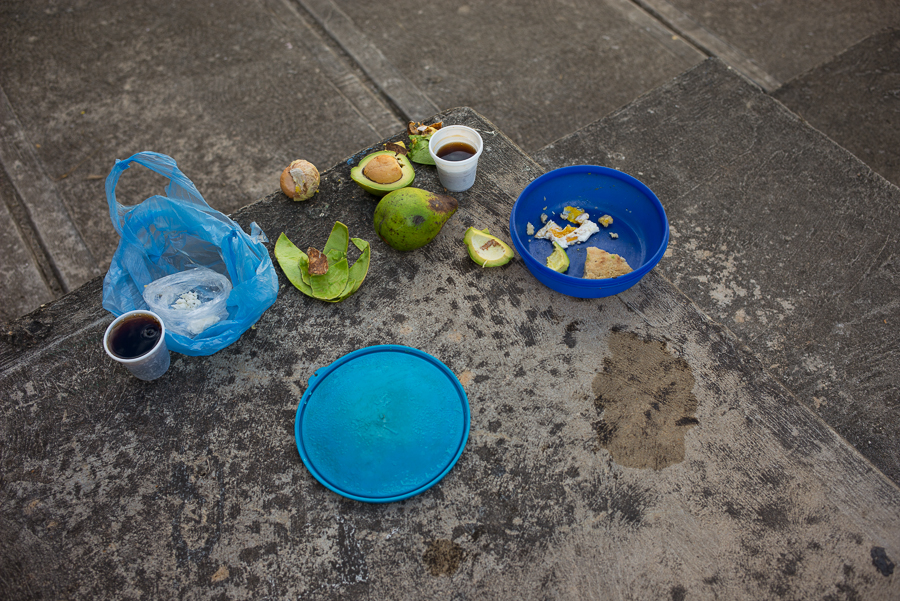
Point of no return
Isira Josefina Malavé lives at a shanty house. Under one of the few bulbs in the house, which are held by ropes, is the cooking pot where she boiled yam for her 11 children.
Now, a child sleeps on a wrinkled blanket on the floor, a step away from a cat that licks its fur. Although he sleeps, the little one looks unconscious. His legs are so thin that his diaper is too big for him. He is one of the triplets Isira had two and a half years ago. The three children suffer from severe malnourishment, while other 5 of her children, aged 6 to 11, currently undergo moderate malnutrition, according to a study made by the children’s school.
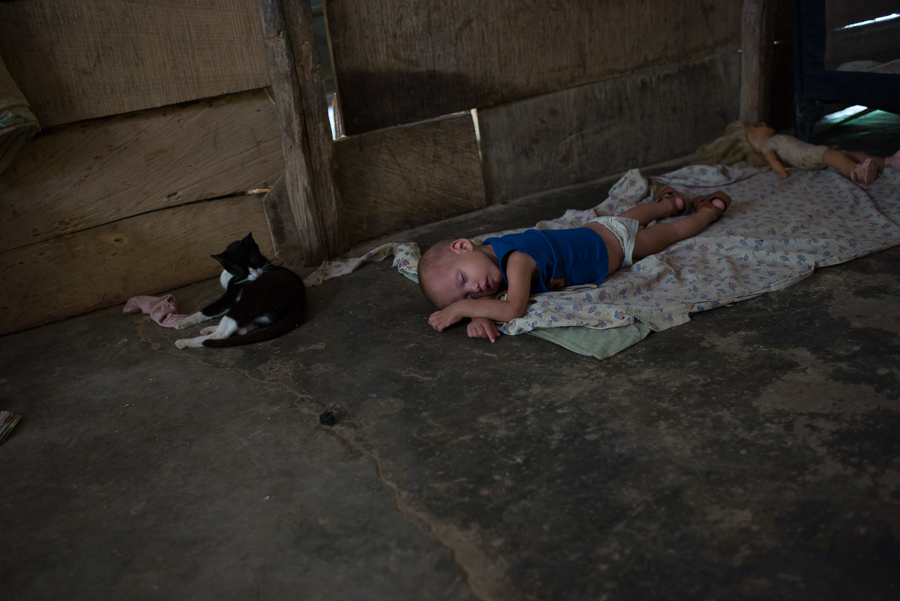
According to the World Health Organization (WHO), malnutrition affects all groups in a community, but infants and children under 5 are the most vulnerable since they need a highly nutritional diet for their growth and cognitive development.
Isira’s voice is weak. It is barely audible above the music coming out of a radio. The mother of the 11 children says: “Sardine is the only thing that I can find for them. When there is yam, yam it is. If not, yucca. When I can buy dried corn, I make arepas for them. Right now, the crops are newly sown and cannot be used.”
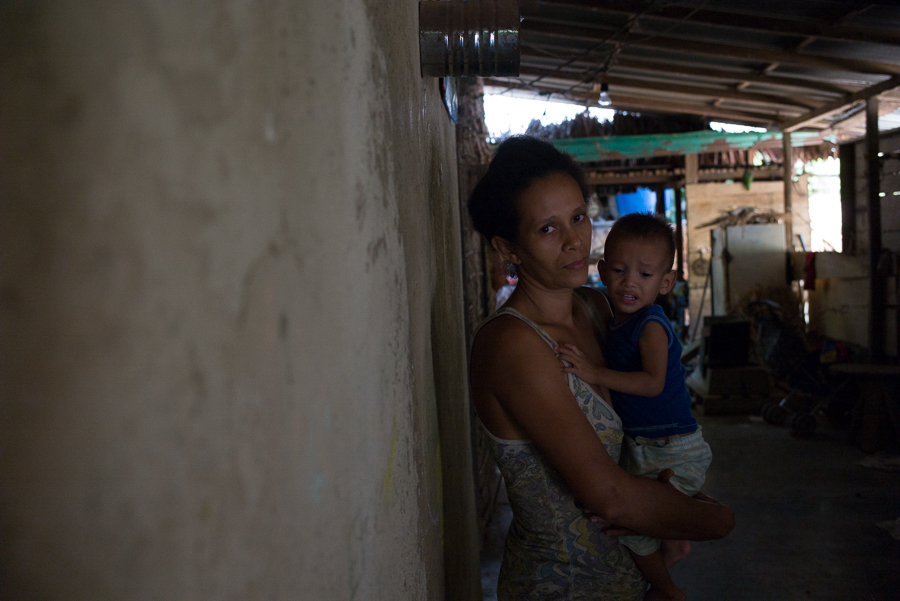
Sometimes the triplets do not go to school because they wake up with fever. At their age, Jose Miguel, Miguel Jose and Mariana del Valle, should weight about 24 pounds, but they barely reach the 14 pounds.
For the NGO Child’s Best Start, dedicated to improve vulnerable children’s nutritional conditions, malnutrition not only affects growth in the short-term. It can also limit the total development of a person’s bones.
The damage caused by malnutrition in children under 5 years of age is permanent. At a cognitive level, it can cause attention deficit, reduce social abilities, difficulties in language development, and decrease mental abilities used to solve problems.
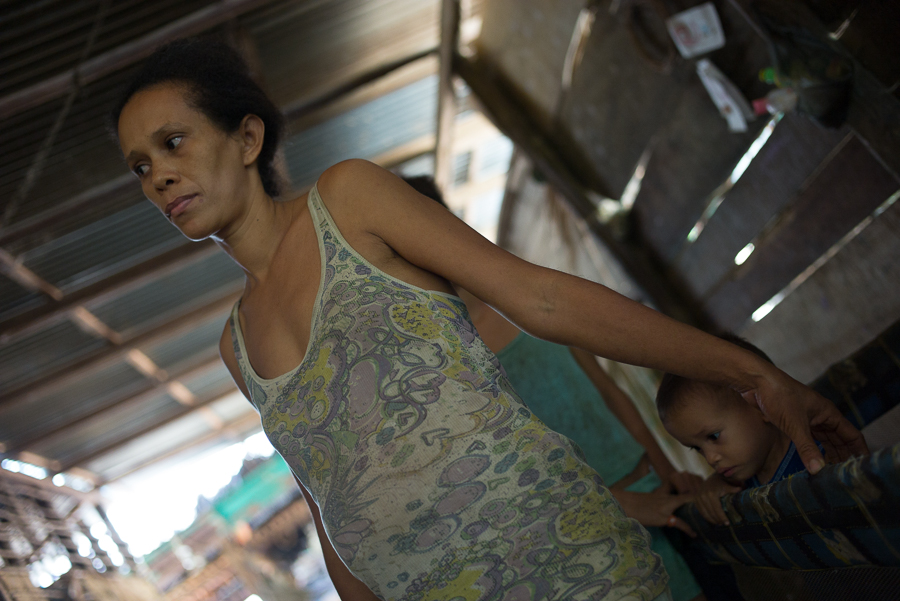
Isira goes out to get the medication prescribed to help her children gain weight, but in Paria, folic acid and Intafer only appear occasionally. Until now it has been impossible to maintain the treatment continuously. Even if the children can recover from malnutrition, it still may be too late.
Danny Diaz, the godfather of the 11 children, has been trying to fix his car for the past two months so that he can work again as taxi driver. But the lack of spare parts makes it very difficult for him to know when he will be able to fix it.
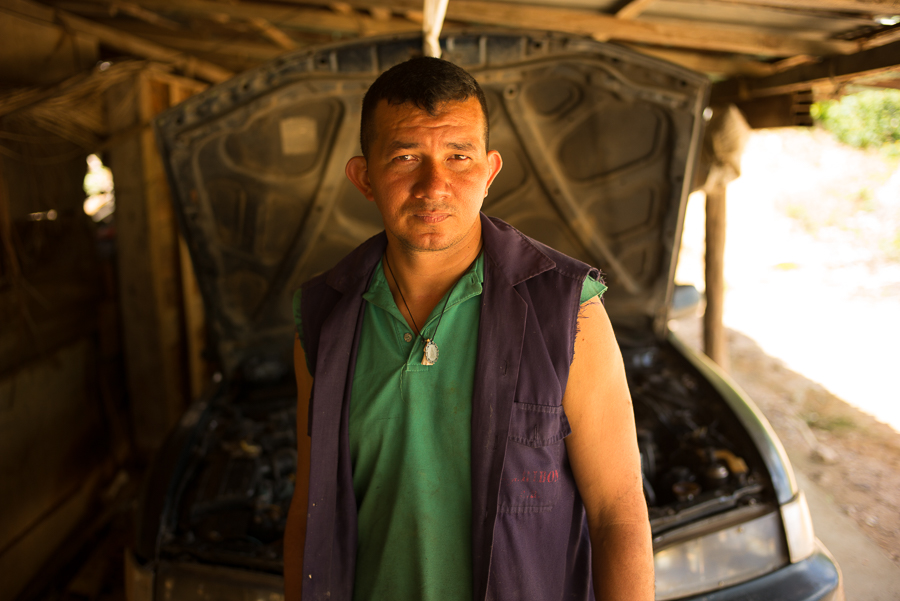
With Diaz’s help, the father of the Tineo-Malavé children managed to plant more than a thousand yucca and corn seeds to find a solution that could guarantee their families’ nutrition. But thieves entered the orchard and took the harvest. Diaz grieves. He says they are helpless. “Where can I go to put the complaint? Before, you could go to any official authority and they offered help. At least they went to the place to see what had happened. Nowadays, they take out paper and pencil, nothing else”, he explains.
“We are surviving with the little pile corn we can buy. We buy two pounds and stretch them,” says Danny Diaz. “In the past you ate two arepas, and now you eat only one, or you eat half an arepa, so that it can last until we can get another 2 pounds, and so on.”
At Paria Peninsula there is an apocalyptic atmosphere. The blocks, added to the scarcity of food, make hunger the only certainty. The godfather of the 11 Tineo-Malavé children says they have been able to hold because they are “a people of breed”, but while trying to repair his car, he confesses his concern for what will come when there are no mangoes left to silence the noise of their stomachs.
“We are surviving with the noise-reliever and the blue jean. When there are no more left, I do not know what we are going to do”, Diaz says.
Near the Carúpano Hospital, Abel, the boy who sells fruit juices and saves mangoes to quell hunger, lowers his jumper’s zipper and shows the long scar in the center of his chest. He had a heart surgery when he was only 9 years old, and ever since he has been prescribed the active principle of Dixogin for life. “I haven’t been able to find Lanitop for some time and that is why I don’t take it anymore,” he says, referring to his medication for heart failure. The young man is aware that if he does not take the medicine, his heart will start to fail: he will feel fatigue, his heart rate will decrease and the risk of having a heart attack or a stroke will increase.
But in the precariousness of his situation, Abel left behind the fear that his heart stops beating. He does not have time to think about that; the one thing that worries him is another vital organ: the stomach. Every morning, when he opens his eyes, he has just one mission: put food in his belly. The food, says Abel, is the only thing that will allow him to have another day of life.
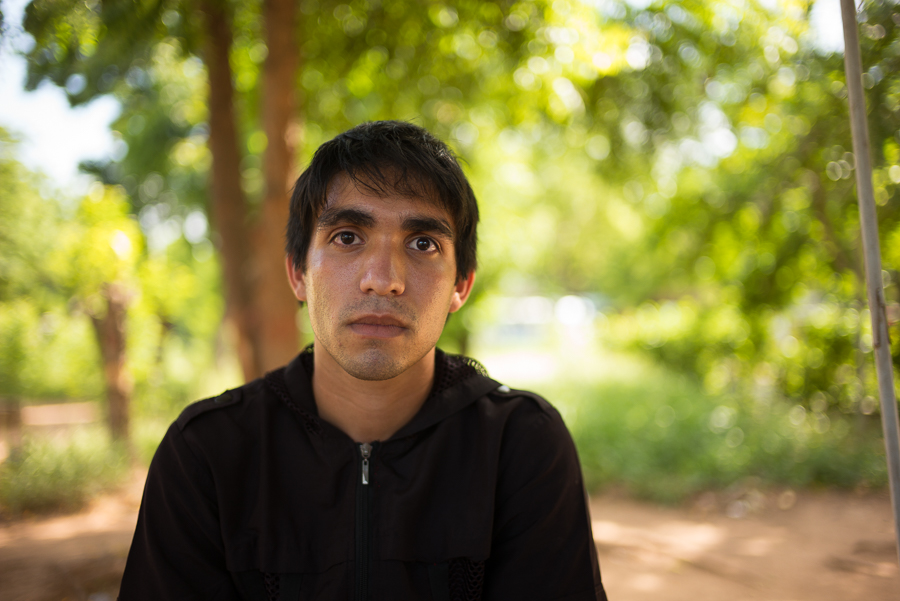
Meanwhile, in those extra days, Abel, like many of the region’s inhabitants, eats mango at night. And holds on.
In Sucre, mangoes prosper between April and September, in the trees at the edge of the roads blocked by protesters who demand food; in the surroundings of the market where there is only sardine and banana; next to the schools where children attend class without having had breakfast.
At the end of the season, when no more “noise-relievers” fall from trees, Paria Peninsula, the site where Columbus first landed believing he had reached paradise on Earth, will have to hear the noise of many empty stomachs roaring in unison.


